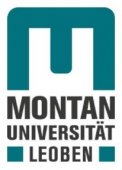
Research activities at the Chair of Physical Chemistry of Montanuniversität Leoben are focused on two main topics. One research line includes mixed ionic-electronic conducting materials, especially oxides –with respect to defect chemistry and transport properties including grain boundary properties. Special attention is paid to oxygen surface exchange reactions. Emphasis is put on basic problems and – with respect on application – on novel materials for solid oxide fuel cells (SOFCs) and solid oxide electrolysis cells (SOECs) for energy conversion and storage. Know-how was gained within a number of regional, national and European research projects in the field of solid oxide cells (SOCs) including mobile applications. Presently, the fundamental relationships between material properties, morphology and electrochemistry of SOCs for highly efficient and sustainable energy conversion and storage are goals of the research.
The other research area focuses on heterogeneous catalysis and electrocatalysis. The main effort is the development of novel energy efficient, low cost and high-performance catalysts for CO2 conversion and utilization. Novel oxide catalysts are synthesized and tested for e.g. reverse water gas shift or dry reforming. These processes are essential for renewable syngas production, which is the raw material for e-fuel production via Fischer-Tropsch routes.
Infrastructure includes test benches for electrochemical characterization of SOFCs and SOECs as well as equipment for the characterization of ionic and mixed ionic-electronic conducting materials, primarily oxides: set-ups for conductivity and conductivity relaxation measurements, impedance spectroscopy, thermal analysis (TG, DTA, DIL), XRD (including high-temperature XRD), scanning electron microscopy, equipment for the mechanical machining of samples, laboratories for chemical synthesis of the materials, and access to analytical methods (RFA, ICP-MS, AAS). For catalyst production a state-of-the-art flame spray pyrolysis setup is available including catalyst characterisation via BET, in-situ XRD and near ambient pressure X-ray photoelectron spectroscopy (NAP-XPS). Different catalytic test reactors are available for testing under industrial conditions including benchmark comparison.

